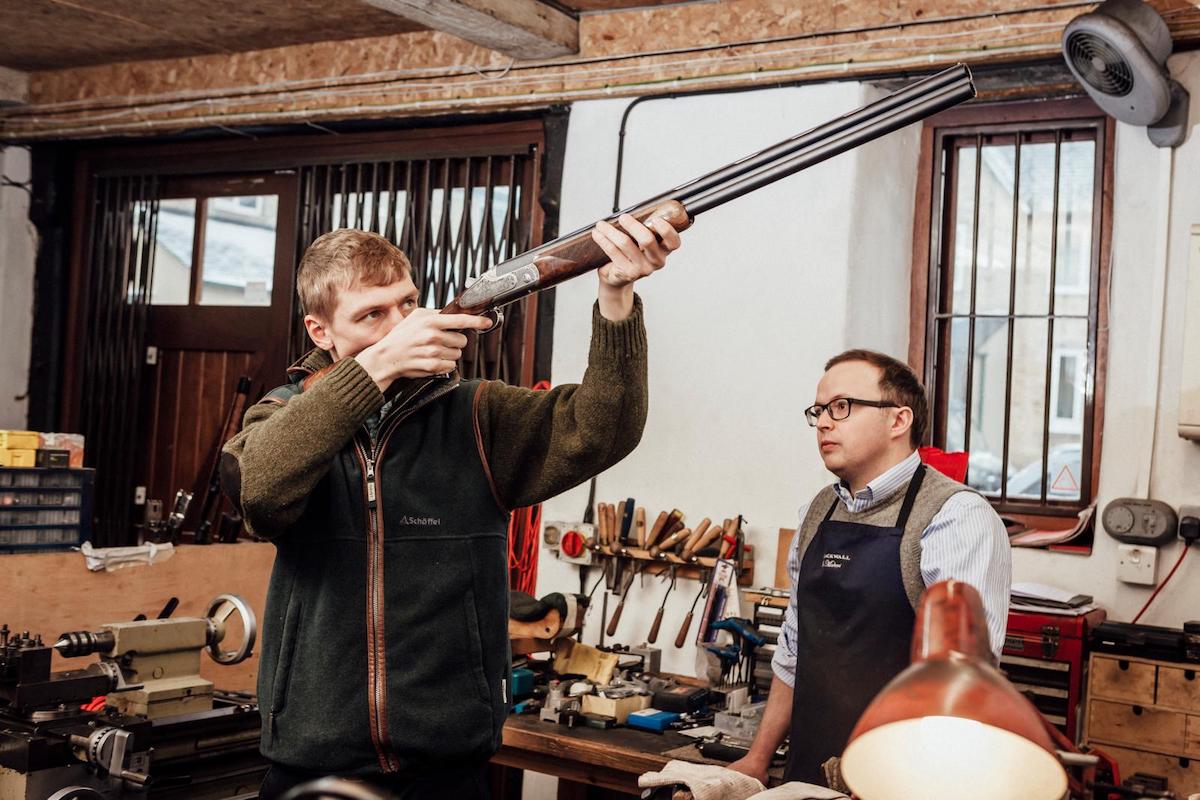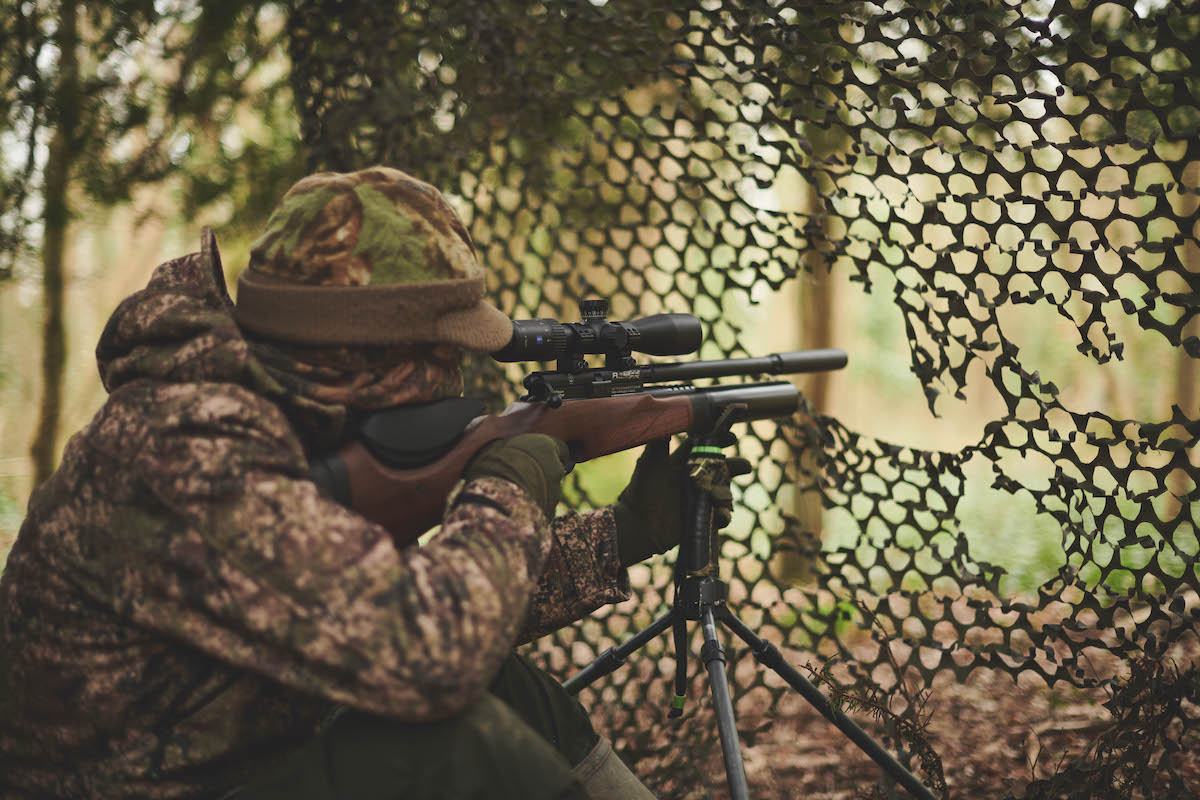Rifle stocks: would you opt for utility, tradition or beauty?
With more choice than ever when it comes to stocks, Graham Downing asks whether plastic, wood or laminate is best for a long day in the field

Graham Downing's Steyr Mannlicher Classic in .243 features an upgraded walnut stock
Fifty years ago, there was no serious discussion about what makes the best rifle stock. There was standard wood for standard-quality rifles and fancy wood for fancy rifles. That’s all changed of course, and today’s rifle shooter can benefit from a much wider choice of materials, from a classic wooden stock through a range of laminates to injection-moulded thermoplastics and even epoxy-bound composite stocks. All have their advantages and disadvantages, but before considering these, it’s worth thinking about exactly what a rifle stock has to do. (Read more on rifle stocks here.)
Primarily, it provides a means of bringing the barrel and action to eye level and supporting it firmly, comfortably and securely in order that the rifle may be sighted at a target. Secondly, it provides a means of transferring and distributing the recoil comfortably to the shooter’s shoulder. To ensure that it performs both these functions, there must be a perfect, or at the very least a near-perfect, fit between the action and the stock, while in most conventional bolt-action rifles the barrel must be allowed to ‘free-float’ within the fore-end.
This is because a rifled barrel flexes when it is fired, in equal and opposite response to the bullet that is spinning inside it. If any part of the fore-end is in contact with the barrel when a shot is taken, this can interfere with the harmonics of the barrel and will potentially affect accuracy. That’s why it should always be possible to pass a slip of paper between the fore-end and the barrel of your rifle.

It should always be possible to pass a slip of paper between the fore-end and barrel of your rifle
Benefits of stock materials
Of course, all materials used for rifle stocks can adequately perform the tasks required of them, but each has its own benefits. A traditionalist at heart, I was brought up to appreciate fine oil-finished walnut and perfectly blued steel, so I have always had a soft spot for wooden stocks. And it must be said that wood makes an excellent rifle stock: hardwoods such as walnut and beech are dense and easy to work, whether by machine or by hand, and they are resistant to most dents and scratches. (Read our advice on restoring gun stock shine.)
Being relatively heavy compared to most plastic stocks, they also assist with absorbing vibration and recoil, and of course they are warm and comfortable to the touch and very pleasing to the eye. To my mind, there is nothing that looks nicer on the blunt end of any gun than a piece of finely figured walnut, and when I had a custom rifle built in .243 by the Steyr factory for a significant birthday a few years ago, that is exactly what I specified, with a particularly nice walnut upgrade.
Upgraded walnut has its disadvantages, though. A year ago I ordered one of Steyr’s new monobloc rifles, this time in .308, and although I was initially quoted an eight to 12-week delivery, I am still waiting. Apparently the finer walnut is sourced from Armenia and supply has been disrupted as a result of the war in Ukraine. While a standard rifle would, I am told, have been with me long ago, the upgraded walnut I asked for has meant a delay of over 12 months. However, the importers have assured me that it is on the next shipment from the factory in Austria, and I console myself with the fact that good things are worth waiting for. But delivery difficulties aside, wood has more significant disadvantages and can crack or split if dropped, struck or abused. When a sling swivel failed as I was carrying my Anschutz .17HMR across a concrete farmyard, the rather nice wooden stock was irreparably cracked. This unfortunate accident did, however, give me the chance to upgrade to the thumbhole stock I was hankering after, and my insurance company helped to soften the financial blow. (How to choose the wood for your gun stock.)
Wood also absorbs water, which will cause it to swell and distort, however minutely. Inevitably this may affect accuracy, and so a wooden stock requires looking after. It must be dried after a wet day and will benefit from the occasional rub down with a little dab of linseed oil to restore its lustre.

A wooden stock can absorb water, causing it to swell and distort
Indestructible
Plastic, on the other hand, is inherently very stable. There is no question of water ingress, it will not alter its shape whatever weather conditions it has to face, and mud or filth can be wiped off. In the rain, sleet and generally foul conditions so often experienced while hindstalking on the Scottish hills, a plastic stock coupled with a chrome steel barrel is a truly excellent combination and nigh on indestructible.
Plastic does not have to look boring either. It can be moulded in pretty much any colour or it can be paint-finished. While black remains popular, there are plenty of options available in greys and greens, which blend nicely with the natural surroundings of hill or forest.

Plastic stocks are a practical and durable option, though they can be more difficult to adjust for length
As already noted, plastic stocks tend to be light, since they are usually hollow, and they are certainly more difficult to adjust for length because there’s less material to screw into or to attach to. Having said that, my black plastic-stocked Steyr Pro Hunter has a series of short stock extension pieces that can be added or removed to achieve optimum overall length. It’s a no-nonsense rifle that is robust, accurate and honest. And it has killed a lot of deer. (Are adjustable gunstocks a worthwhile investment?)
Rock solid
But there’s another alternative that has the stability of plastic and yet the feel and attractiveness of wood. Laminate stocks are made from thin layers of wood that are stabilised with resin and then glued and pressed together. This method of construction means that different woods can be combined to create a stock that is 100% rock solid, totally water-resistant and pleasing to the eye at one and the same time.
Peter McGregor of Form Rifle Stocks, operating out of a workshop near Exeter, uses 1.5mm birch veneers from Finland, which are hot glue pressed to produce a material that is much more stable than natural wood.
“Maintenance-wise, you don’t have to do anything to wood laminate. If you scratch or bang it, you can get the dents out, and with a bit of TLC you can get it back to perfect condition again,” he told me. “We can machine to very tight tolerances, far more precisely than in mass manufacture. It’s nicer in the hand and you can make the contours flow better, with wrap-around grip, palm swell or thumbhole.”

Laminate stocks are not only pleasing to the eye but are also water-resistant
When creating a stock, Peter first machines it, then fits the rifle to the stock to make sure everything works. Then the stock is sanded, fitted again and finished with an Italian-blended oil with UV protection. Finally, it is fitted once more prior to delivery.
And since the individual layers of wood can be dyed during the manufacturing process, it is possible to achieve almost endless colour combinations with laminates, from subtle greys, browns, greens and ochres to wacky blues and pinks. Not so appropriate for the field perhaps, but just the ticket if you want to appear really cool on the range.

Whatever your stock material preference, the decision will usually be influenced by budget
Workhorse
In the end, a lot of decision making will come down to price. Budget rifles will almost inevitably be factory-fitted with synthetic stocks, but some manufacturers offer wood — and really nice wood too — if you select a bigger-ticket version of the same firearm. The popular Blaser R8, for example, is a real workhorse in black plastic but is transformed into something you can cherish and your shooting buddies will most certainly admire on a smart day’s driven boar hunting when stocked in fine walnut and fitted with leather grips and inserts.
Most of us will start our stalking career with a synthetic-stocked rifle and many of us will never want anything different. But for those who do, there are the clean and contemporary lines of a laminate stock to consider, with an upgrade probably starting in the region of £500. Or there’s the seductive lure of figured walnut that will inevitably pick up the marks, scratches and minor scars of use, but which will age gracefully and develop that polished patina that is the mark of a much-loved and favourite firearm.








